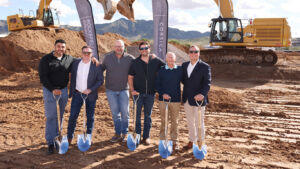You’ve heard the phrase a million times – “Cash is king.” But what are we trying to accomplish with cash? Does cash equal success? Profit? Stability? Does a lack of cash signal a problem? It all depends on your perspective.
Contractors are in a unique business where everything is based off of estimates, so revenue is recognized under the assumption that your estimates are accurate, although subject to change. For this reason you cannot afford to just focus on the profit/loss information driven by your income statement or WIP schedule.
We all know your jobs are typically not going to generate the EXACT amount of profit you estimated at bid day, so the income statement is just your “best guess” as of that day as to how your year is going. The list of why profit on jobs can fade is endless – requested change orders are performed but never approved by the owner, subcontractor issues, site conditions, weather, labor quality, project management, poor estimating, ambiguous bid specs, difficult owner, unexpected delays, etc. The point is that in addition to monitoring the status of all your jobs which will drive your profit, you must also be keenly aware of your cash position and cash flow, both now and on a projected basis.
Why should cash flow be targeted as a key measure of business performance? Because the income statement and balance sheet, although useful, have all kinds of potential biases as a result of the assumptions and estimates that are built into them. However, when you look at a company’s cash flow statement you are getting an indirect look into their bank account. In the end, cash does not lie.
As a former commercial loan officer, I had to continually advise business owners that even profitable companies can fail if they run out cash. Unfortunately, a strong income statement is not necessarily indicative of a financially healthy company. Contractors can fail from a lack of cash for a number of reasons:
- Growing too fast without the appropriate equity or bank financing to keep up
- Too many large projects undertaken at once with slow paying owners
- Letting receivables get beyond 60-90 days past due
- Working for owners with cash flow problems of their own
- Bad debt that takes a long time to be recognized/written off
- Purchased too much inventory or equipment using cash
- Cash taken out of the business and loaned to shareholders/employees/other business interests
- Excessive reliance on bank debt and leverage
- Excessive distributions to shareholders
- Excessive underbillings
- Problems collecting retainage
Remember, every bank will have a limit they are willing to lend in order to support your business and cash flow needs. It’s up to you as the owner or chief financial officer to know your banking limits and compare those to your needs and identify solutions to make up any shortfalls. What are some ways you can help improve your cash position?
- Forecast project cash flows when bidding new work to determine if there are periodic drains on cash for items like equipment or material purchases, mobilization, or peak labor periods and the delay in the outflow versus projected inflow (do you know how long the owner/GC typically pays after receipt of a submittal?).
- Compare the project forecasts against your general cash flow forecasts to determine your cash flow needs and whether you have the available cash on hand or working capital line of credit to support the project. Be conservative in your assumptions.
- Be sure to establish on ongoing dialogue with your banker around the size of your line of credit and understand how large of a line your bank is comfortable extending and the requirements to obtain that limit. Be sure they understand the seasonal nature of your business and cash flow cycle and that you may request an increase to your line at a time when you are cash rich and seemingly do not need the increase. It’s always better to ask for the increase before you actually need it. Typically banks do not charge a non-use fee for contractor bank lines so the additional credit limit should not come with much of a cost.
- Discuss with your banker the ability to have a separate capital expenditure line of credit available for equipment purchases so you are not using your cash on hand or working capital line of credit to buy fixed assets.
- Are you having a problem with getting your submittals approved the first time? This can cause unnecessary delays and impact your cash flow. Create a best practice in getting these to your owner/GC’s in a timely manner each month in the format required.
- Are punch list items to blame for slow paying owners? Holding up retention? Again, this can often be avoided with a system of procedures to address them in a timely manner and keep the cash flowing.
- While you need to keep your key suppliers happy, are you paying them faster than you are paid? Is this necessary? Can you work with your suppliers during a cash crunch to allow for extensions of time without an interruption of service or terms for new orders?
- What role do your project managers play in getting paid by your client? Can they be more proactive and involved in the collection process?
- How do you determine distributions or bonuses at year end and throughout the year? Do you analyze your cash on hand versus your cash flow forecasts to consider the impact of these items? Can they be accrued but not paid in order to conserve cash? How about deferring a portion of these payments? While we all want to reap the rewards of the most recent year, we also need to focus on the long term health of the “golden goose” so it can keep laying eggs, year after year.
- Are you in the middle or beginning of a shareholder buyout plan? Can this be structured to be paid over time rather than cash out all at once? Are there provisions in your agreement to curtail payments in a given year if the company’s performance was below a certain target?
If time is taken to understand the cash flow needs of your business, the return on that investment in time can be considerable. In difficult times like these, it could likely mean the difference between success and failure. You must keep track of your effectiveness and timeliness in turning profit into cash. This will also allow you to see early warning signs of trouble and take appropriate action. Being able to proactively manage your cash needs is critical to the short and long term success of your business. Don’t forget though that you may experience times when you have good cash flow even without profit. Look at your statement of cash flows to determine the sources of your cash. A large reduction in A/R or increase to overbillings may boost your cash positions temporarily, but the income statement or backlog schedule may be painting a different picture. Be prudent with your funds as you determine how best to deploy you cash and always keep one eye on future needs.
Mike Marsella is a Surety Producer for MJ Insurance. www.mjinsurance.com



